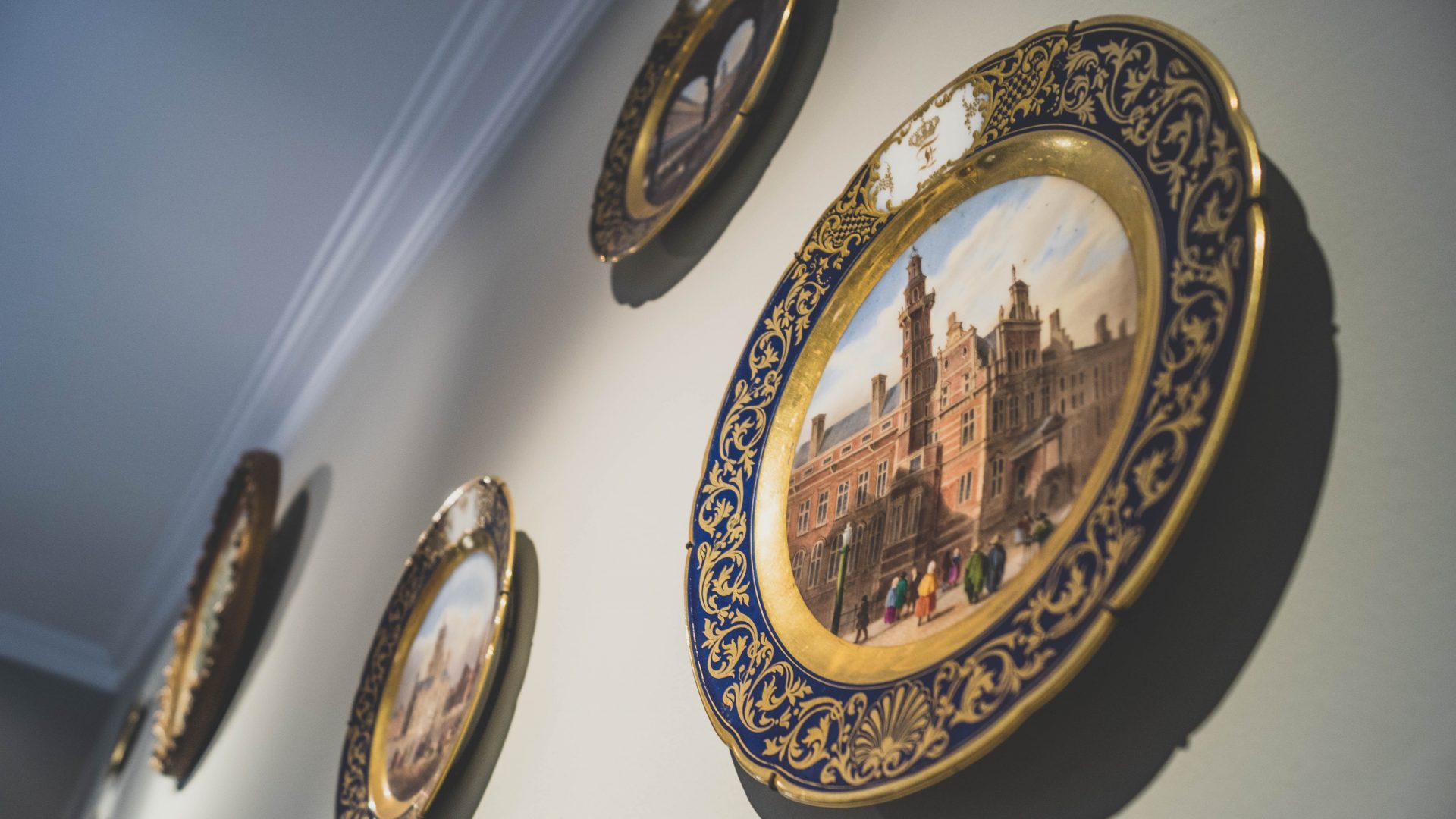
COLLECTION
The Capodistrias Museum Collection houses the largest number of Ioannis Capodistrias’ personal belongings, including: gifts that he received during his political career, books from his personal library, and household items. The collection also includes government documents and artefacts from the period he served as Governor of Greece, as well as family heirlooms, memorabilia and furniture from the country house.
The largest part of the collection came from the donation by a descendant of the Governor’s brother, the late great benefactor Maria Capodistria – Desylla, who, along with the estate, donated many unique family heirlooms. Over the years, the museum’s collection has been enlarged by several donations from supporters of the museum and other fellow citizens, who wish to see heirlooms and documents related to Ioannis Capodistrias preserved, so that they can be studied further and presented to the public.
COLLECTION HIGHLIGHTS
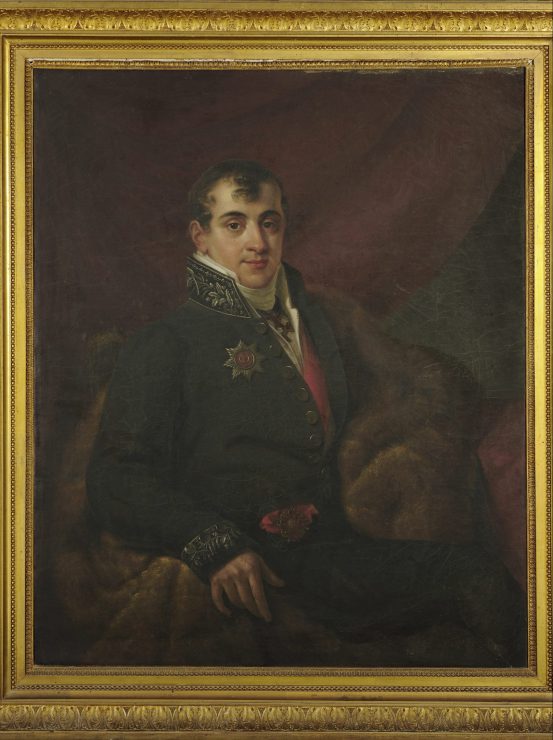
Ioannis Capodistrias, 1814
Pieter Recco (1765 – 1820)
Oil on canvas, 115×137cm.
Capodistrias Museum – Center of Capodistrian Studies ΜΚ 092
A work by the Flemish painter Pieter Recco, painted in Switzerland at the end of 1814. Capodistrias posed for his portrait, which he sent as a gift to his family in Corfu.
In this portrait, Ioannis Capodistrias is depicted at the age of 38, wearing his official diplomatic uniform and the medal of the Grand Cross of St Anne on his right lapel. Around his neck, he has the 2nd class Cross of the Order of St Vladimir, which was presented to him by Tsar Alexander I in June 1814, for his successful diplomatic mission to Switzerland.
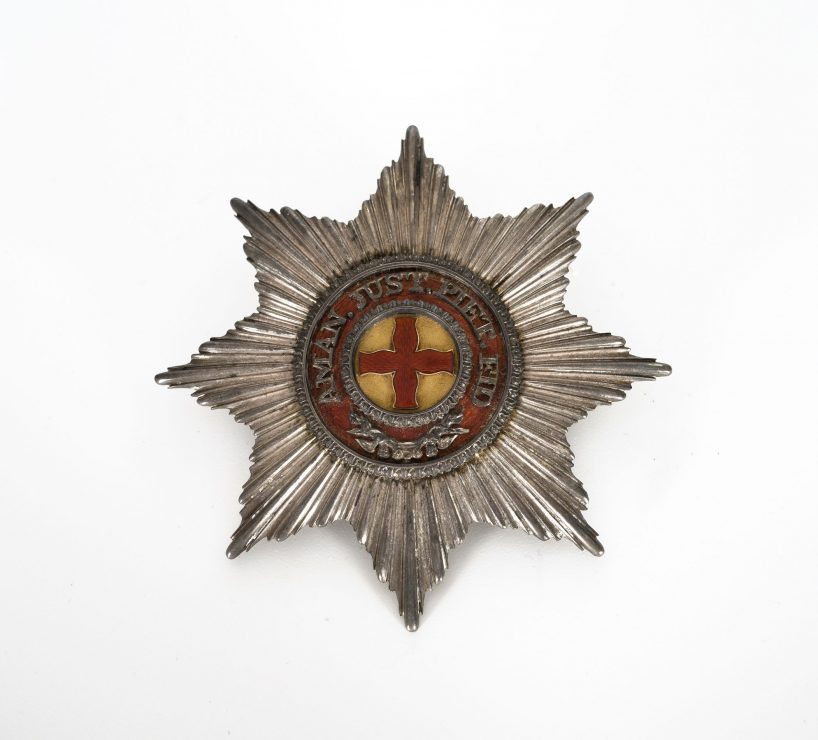
Grand Cross of the Order of St Anne, 1st class
Diameter: 6.9cm
Capodistrias Museum – Center of Capodistrian Studies ΜΚ 056
Grand Cross of the Order of St Anne, which Tsar Alexand I presented to Ioannis Capodistrias in 1814 for his services in Switzerland. Around the cross, the star has the words: AMAN.JUST.PIET.FIDEM. (Aman[tibus] just[iam] piet[atem] fid[em]).
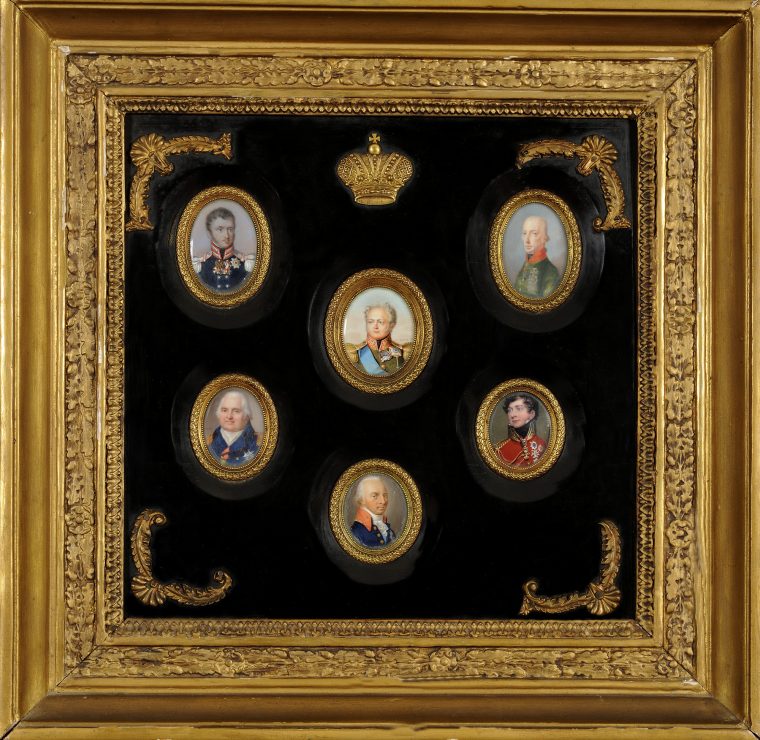
Picture with the portraits of the leaders at the Congress of Vienna
Early 19th century, Dimensions: 34×34cm.
Capodistrias Museum – Center of Capodistrian Studies ΜΚ 193
A picture that incorporates six miniature portraits of six leaders who participated in the Congress of Vienna. MAXIMILIAN-JOSEPH King of Bavaria, 1806-1825 (upper right), FREDERIC GUILLAUME III – King of Prussia, 1797 – 1840 (upper left), ALEXANDER I Tsar of Russia, 1801-1825 (centre), LOUIS XVIII King of France, 1814-1824 (bottom right), FRANCOIS II – Emperor of Austria, 1804 – 1835 (bottom centre), GEORGE IV Regent of England, 1810-1820 (bottom left). The portraits, painted on shell, of the six most important leaders that took part in the Congress of Vienna were presented to Ioannis Capodistrias by the men themselves.
Ioannis Capodistrias had these portraits placed in a frame of gilded ivory and then sent as a gift to his father, Antonios-Maria Capodistrias.
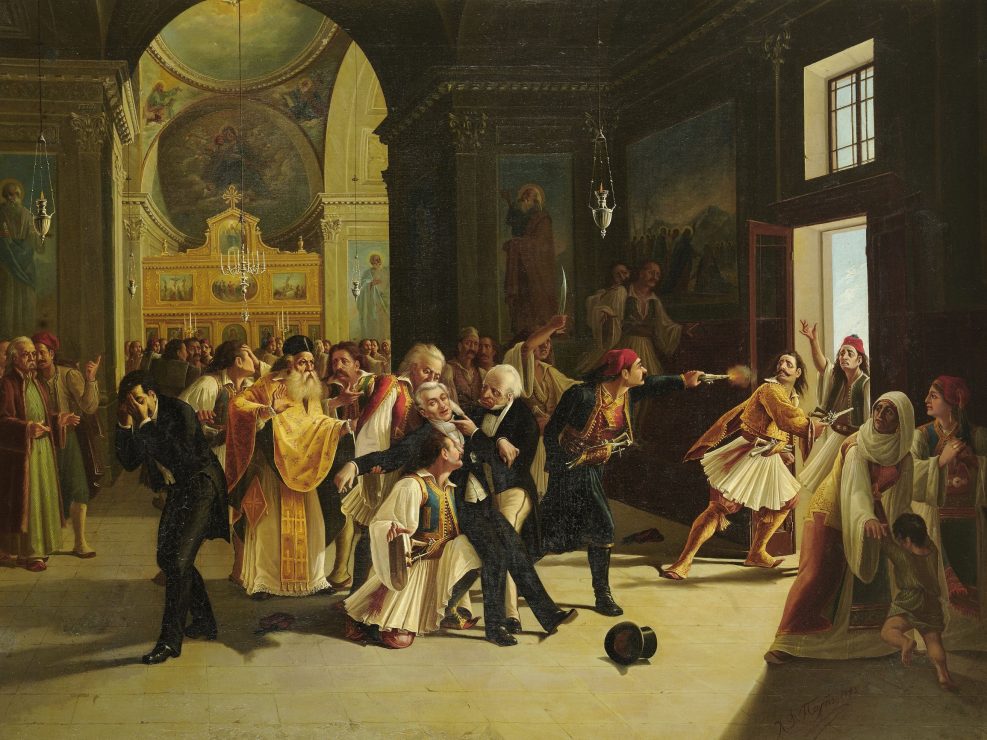
The Murder of Ioannis Capodistrias, 1872
Charalambos Pachis (1844 – 1891)
Oil on canvas, 101.5 x 77cm.
A donation from Erasmia Panteliou
Capodistrias Museum – Center of Capodistrian Studies ΜΚ195
A painting by the Corfiot artist Charalambos Pachis, one of the most important representatives of the Ionian School of artists, which recrates the historic theme of the murder of Capodistrias in Nafplio with allegorical symbolism. The work was presented to the Capodistrias Museum – Centre for Capodistrian Studies by Erasmia Panteliou.
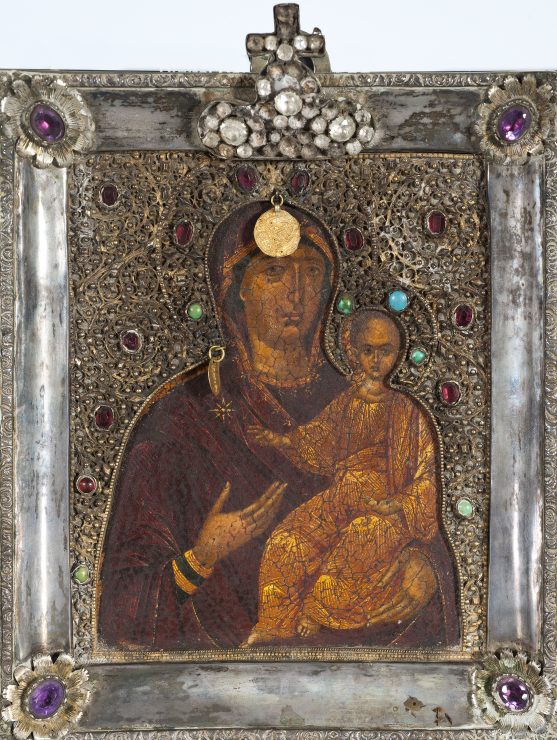
Virgin and Child
Dimensions 17×20cm.
Capodistrias Museum – Center of Capodistrian Studies ΜΚ 126
The icon of the Virgin and Child decorated with semi-precious stones and gold coins was a gift from the Esfigmenos Monastery on Mount Athos to the Governor in 1830.
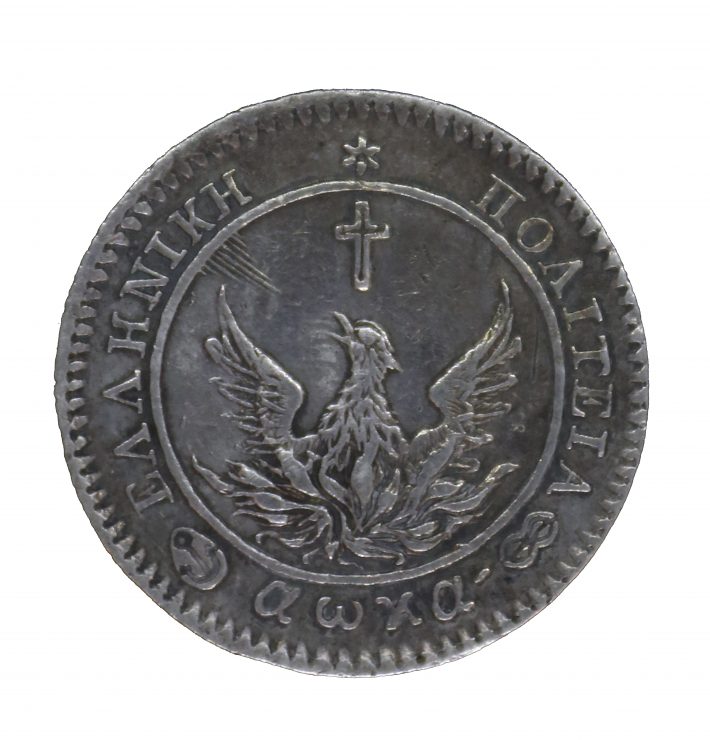
Phoenix
Dimensions: 2.20cm. (diameter)
Capodistrias Museum – Center of Capodistrian StudiesΜΚ395
The first Geek currency of modern Greece was minted by Governor Ioannis Capodistrias in 1829. In its production, it used silver that came from other objects, such as gun decorations. Its value was set at 1/6 of the Spanish distiller dollar, which was in broad circulation in the Greek area. The minting of the phoenix was stopped by decree of Otto, on 1st February 1833.
The obverse of the coin depicts the mythical phoenix, which is reborn from the flames, crowned with the symbol of the cross. Around the edge is the epigram GREEK STATE αωκα [1821] and the symbol of the mint. At the centre of the reverse is the value of the coin in the middle of a wreath of olive and laurel. Around the edge is the epigraph: GOVERNOR I.A. CAPODISTRIAS 1828.
The coin was acquired in 2019 following a crowdfunding campaign.

Capodistrias family tree
Marios Pieri (1906-1990)
Watercolour on paper, 71.5 x 106cm
Donation by the Corfu Reading Society
Capodistrias Museum – Center of Capodistrian Studies ΜΚ157
According to oral tradition, the Capodistrias family came to Corfu towards the end of the 14th century, from Capo d’Istria (modern Koper in Slovenia). It is said that the original surname was Vitorri, but soon, the name that designated their origins prevailed: Capodistria. The branch of the Capodistrias family from which the Governor came is that of the delle Mura (lit. of the walls). It got its name from the position of the family home, above the sea walls of the city of Corfu.
This work was presented to the Capodistrias Museum by the Reading Society of Corfu.
.
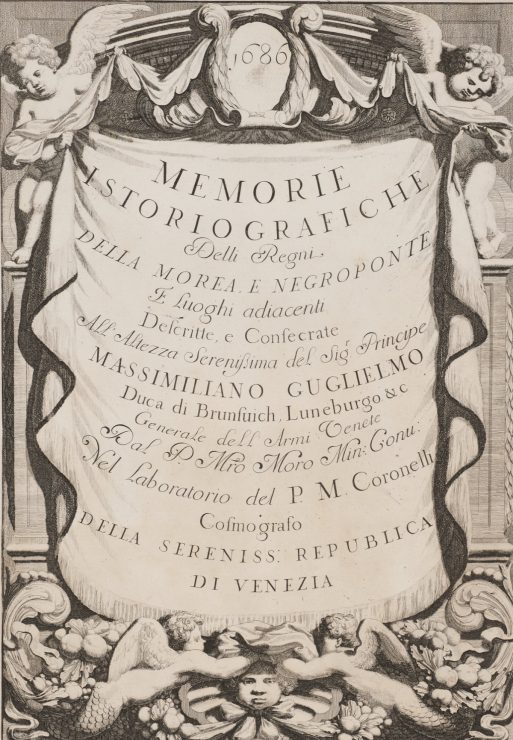
Atlas of Vincenzo Coronelli (1650-1718)
Memorie Ηistoriografiche delli regni della Morea e Negroponte e luoghi adiacenti, Venice 1686
Capodistrias Museum – Center of Capodistrian Studies ΜΚ306
This geographical atlas by the well-known cartographer Coronelli belonged to Ioannis Capodistrias and is one of the very few books from his library that still survives. It was published in Venice in 1686 and includes important information about the defences in the Greek area.

